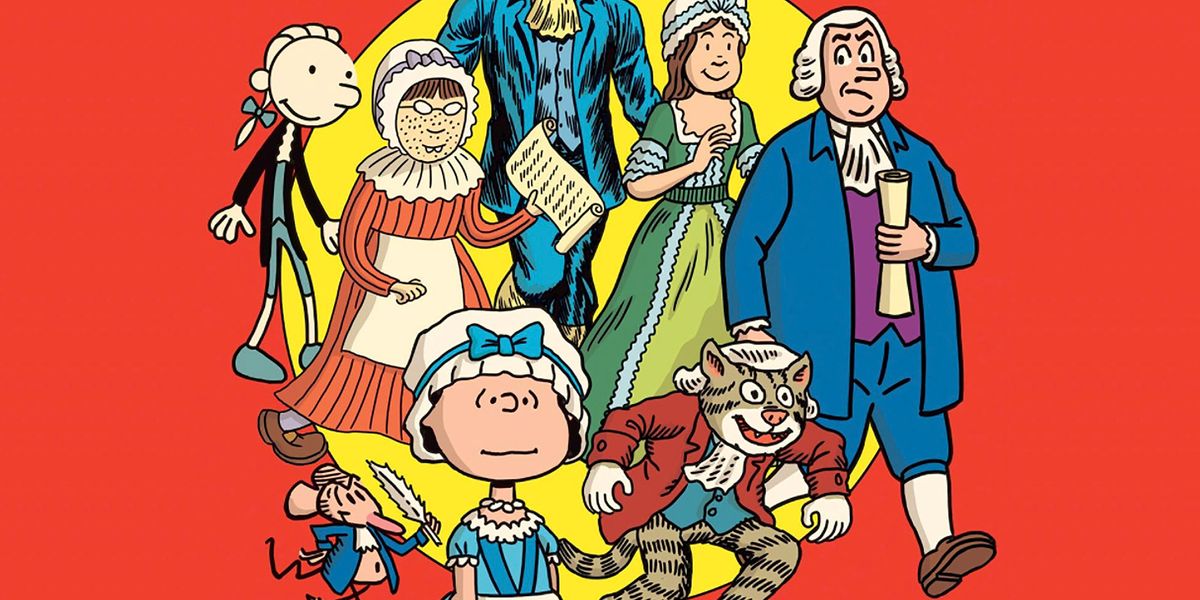How many artists have created their own genres? Robert Sikoryak may stand among few, especially for genres within the comics form.
He has an eloquently simple concept: combine a set of words with incongruous drawings in the styles of famous comics. For his first 2009 graphic novel,
Masterpiece Comics, Sikoryak retold classic works of literature, such as The Scarlet Letter, Doctor Faustus, and Crime and Punishment, featuring Little Lulu as Hawthorne’s Pearl, Garfield as Marlowe’s Mephistopheles, and Batman as Dostoyevsky’s homicidal protagonist.
In 2017,
Terms and Conditions earned Sikoryak greater attention for an even stranger premise: the complete, unabridged iTunes user agreement with Steve Jobs drawn in 94 pages of constantly changing styles. For The Unquotable Trump, released later the same year, he applied his formula to political satire, inserting Donald Trump cartoon images and verbatim quotes into comic book covers, with an appropriate emphasis on supervillains.
Now Sikoryak delves even deeper into American politics by adapting the most central US text.
Constitution Illustrated provides the complete, unaltered Articles and Amendments in 114 cartoon vignettes. The book is both Sikoryak’s widest range of comics homages yet and, more oddly, his most practical. Where the iTunes contract was a comically absurd choice because so few people have ever bothered to read it, the Constitution is, of course, a keystone of US law and culture. Sikoryak even evokes a pocket-sized edition, that ubiquitous prop used by politicians and pundits in need of something to clench and wave above their heads.
I just used my copy to check whether the 19th Amendment established the right of women to both vote and hold office or just to vote. The page features a spot-on imitation of
H. G. Peter, the first but uncredited Wonder Woman artist. That pairing is a good illustration of Sikoryak’s logic and humor. Though unlike the adaptions in The Unquotable Trump, the page isn’t an exact recreation (like John Romita’s 1975 The Hulk on the Rampage cover), but a formally freer combination of style and subject. (The 19th Amendment, by the way, is just for the right to vote.)
(courtesy of Drawn & Quarterly)
If you’re a comics aficionado, Constitution Illustrated is also the ultimate pop quiz. I didn’t keep score as I flipped through the first time, but I chuckled when I recognized the logic behind each discordant pairing, especially the superhero motif. For Article I, Section I describing the division of Congress into the Senate and the House, Sikoryak draws two muscular and oppositely colored patriots sprinting in a mirrored pose cribbed from the 1976 cover of The Greatest Race of All Time! Superman vs. the Flash. The two DC heroes are allies on the same team, but they still compete against each other all too often. That antagonism increases when the House’s Super Friends face a row of Senate supervillains in an illustration of the House’s sole power to create tax-raising bills and the Senate’s power to amend them.
Instead of Spider-Man’s antagonists Prowler and J. Jonah Jameson watching Peter Parker fall from a window, Sikoryak draws a presiding Chief Justice and a Senator watching the President in the same pose—an apt illustration for the protocols for trying an impeachment. President Parker bears no resemblance to either Donald Trump or Bill CIinton, but Sikoryak kindly adds tingling spider senses emanata as a helpful clue (something artist Romita did not include on the original 1969 cover).
A 1943-based colonial Captain America blocks a spray of musket bullets—metaphorically blocking the states’ ability to wage war, a power exclusive to the federal government. Sikoryak leaps to 1992 for Article II, Section 2’s description of the President’s role as Commander in Chief. I admit I didn’t recognize Jim Lee’s Wild C.A.T.s cover, just the decade-defining style which I took for Rob Liefeld. Happily, Sikoryak provides a cheat sheet in the appendixes, listing the source for each of adaption.
The list of comics artists that get a respectful nod in Sikoryak’s Constitution Illustrated is dizzyingly eclectic. It includes Alison Bechdel, Garry Trudeau, Roz Chast, Art Spiegelman, Chris Ware, Charles Schultz, Frank Miller, Scott McCloud, Adrian Tomine, and many more. This book could be used in courses in comics and cartoon history, as it features some of the earliest creators, like Richard Outcault (The Yellow Kid) and Windsor McCay (Little Nemo), and some of the most recent, like Noelle Stevenson (Lumberjanes) and Bianca Xunise (Six Chix).
Black artists George Herriman, Jackie Ormes, Matt Baker, Barbara Brandon-Croft, and Aaron McGruder are represented, as well as the presentation of Black characters by non-Black artists. The Jaime and Gilbert Hernandez tribute is the most diverse, implying a hope that the Electoral College, which it describes should reflect the same level of diversity. Less subtlety, Sikoryak draws a chain-breaking Luke Cage to illustrate the slavery-ending 13th Amendment. His 25th Amendment depicts a Black vice-president assuming the presidency—just as the Black character John Stewart assumed the role of Green Lantern in DC comics.
My favorite, though it’s disturbing, is Mandrake the Magician turning his African servant Lothar partially invisible beneath the census directive to count only “three fifths of all other persons”, meaning, of course, slaves. The image unites the racism of the Article with the racism of the 1930s characters. It also highlights how any contemporary analysis of the Constitution must address its deep flaws too. Sikoryak’s satirical pairings breathe new and sometimes uncomfortable life into the United States’ most living document.
(courtesy of Drawn & Quarterly)




